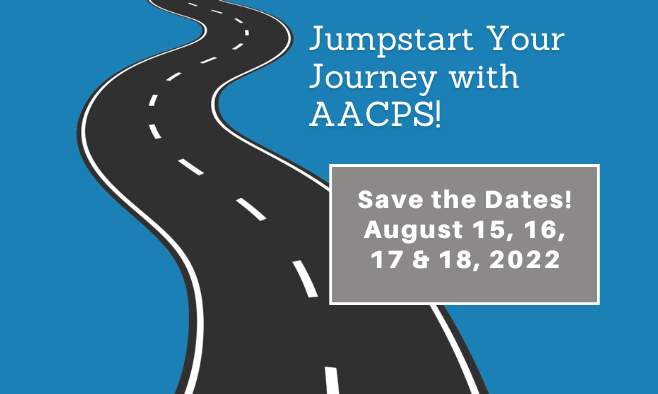
Special education teaching requires special attention. This type of teaching requires the use of special physical and supplementary tools in a classroom setting. This teaching style aims to enhance educational opportunities for students with special learning needs. Accommodations may be made to the curriculum, supplementary aids, or physical adaptations depending on the situation. These accommodations allow students with disabilities to participate in the classroom environment and meet their physical and emotional needs.
Students with learning difficulties
A learning disability refers to an inability or difficulty with performing certain tasks. Students with learning disabilities may need special education services to achieve their academic goals. The student's disability must not be so severe that it prevents him or her from reaching the highest standard of achievement in their grade. Other factors, such as vision or hearing impairment, mental retardation or cultural differences, cannot be a cause of the disability.
Although learning disabilities are common in children, they are not evenly distributed among racial groups. Despite the fact that learning disabilities are more prevalent in boys than in women, it is not due to gender bias. Boys are also more likely be referred to special school because they are active and can have an impact on their academic performance.

Adapting a curriculum
Curriculum adaptation allows teachers to adapt their curriculum in a dynamic way that meets the needs of students with learning disabilities. This approach ensures that each student is given the opportunity to learn. Adaptations can involve changing the amount of items that a learner is required to complete, the length of time allotted for each lesson, and the amount of staff assistance needed. Sometimes teachers may change the content and method of instruction.
The most effective curriculum adaptation is student-specific and individualized. Teacher must determine the learning needs of each student and create tools to enable them to make effective curricular modifications.
Working with Assistive Technology
Learning with assistive technology can bring many benefits to learners who have disabilities. It can enable these learners to be leaders in the classroom, take part in extracurricular activities, as well as foster a sense a camaraderie, amongst their peers. These students may also be able to develop trust and self-confidence through the help of their teachers.
Assistive technology is an essential part of special education teaching. When selecting technology, educators must consider a student's needs and environment to determine if it will be beneficial to him or her. It doesn't suffice to search for the best-technical or most expensive gadget. They should consider the current skill level, environment changes, and new technologies.

Issues regarding funding
Schools and districts are facing serious financial problems because they lack funding for special education. This lack in funding affects students with disabilities as well as teachers and itinerant service providers. Teachers and service workers have to be more resourceful to meet student needs if there is not enough funding. Administrators are left to look for other funding sources, such as local levies or budget cuts.
Unfortunately, the funding model is not working. This funding model is neither fair nor equitable. It's also hard to keep teachers in the classroom. This lack of funding for special education schools has resulted in a high rate of turnover in classrooms, which hinders the growth of students. Teachers have spoken out in an effort to improve the situation.
FAQ
Is becoming a teacher difficult?
Being a teacher is a huge commitment. You will need to give a significant amount time to your studies.
You can expect to work 40 hours per semaine while earning your degree.
In addition, you will need to find a job that fits your schedule. Many students have difficulty finding part-time work that allows them to balance schoolwork and their personal lives.
After you have been offered a permanent position, you will be expected to teach classes throughout the day. You may even need to travel to different schools throughout the week.
What is homeschooling exactly?
Homeschooling is an educational method where children are educated at home by their parents. It is also known by the names private education or self-education.
For families who wish to educate their children at home, homeschooling is an excellent option. This method allows them to receive a quality education without leaving the comfort of their own home.
Parents educate their children from birth until they graduate high school. They choose which subjects to study and how long each subject should last. The student learns everything on his/her own time.
Parents decide when to begin teaching their children. Many schools recommend that children enroll in classes between the ages four and twelve. However, some families choose to wait to begin teaching their children until they reach kindergarten.
Parents may use any number of resources to guide them through the curriculum. The lessons can be learned from videos, books and magazines as well as websites.
Many families find that homeschooling is a good fit for their hectic schedules. Children can be spent more time at home than in traditional public schools.
What are some ways to get scholarships?
Scholarships are grants to help with college expenses. There are many types and types of scholarships. These are:
-
Federal Grants
-
State Grants
-
Student Loans
-
Work Study Programmes
-
Financial Aid
Federal grants come directly from the U.S. government. Federal grants usually require applicants to meet specific requirements. To demonstrate financial need, applicants must meet certain requirements.
Individual states offer state grants. State grants can be offered by each state based upon financial need, while others are given for specific purposes.
Banks and other lending institutions issue student loans. Students usually borrow money to cover tuition and living costs.
Employers can use work-study programmes to attract qualified students. Employers must pay at least the minimum wage to their employees.
Financial aid is available to help low-income families pay for college. It covers all or most of the tuition costs.
Statistics
- Data from the Department of Education reveal that, among 2008 college graduates, 92.8 percent of humanities majors have voted at least once since finishing school. (bostonreview.net)
- “Children of homeowners are 116% more likely to graduate from college than children of renters of the same age, race, and income. (habitatbroward.org)
- In most developed countries, a high proportion of the population (up to 50%) now enters higher education at some time in their lives. (en.wikipedia.org)
- These institutions can vary according to different contexts.[83] (en.wikipedia.org)
- Globally, in 2008, around 89% of children aged six to twelve were enrolled in primary education, and this proportion was rising. (en.wikipedia.org)
External Links
How To
How to apply for homeschooling
Homeschooling is a method of teaching children subjects at home. This includes reading books and watching videos, performing exercises, listening to music, and learning through various methods. Because students can learn at their own pace as well, homeschooling is one of most effective learning methods. It allows them to develop skills such a problem-solving, critical thought, self-discipline. communication, and social skills.
It is very common nowadays to see people who want to educate their children at home, especially parents who work full-time and do not have enough time to spend with their kids. Homeschooling is an option that allows parents to focus their efforts on their children's education and not have to worry about how to find someone to care for them.
There are many benefits associated with homeschooling; some of these include developing the ability to think critically and creatively, increasing their knowledge base, improving their language skills, developing their personal identity, becoming independent learners, and having greater control over their life than if they were attending school.
Homeschooling is designed to give quality education to students so that they can succeed as adults. There are certain prerequisites that must be met before you start homeschooling. This includes determining whether your child qualifies to attend private or public schools. If you decide to start homeschooling, you should consider what kind of curriculum you will use. You have many options when it comes to curricula online. These can be customized to suit your needs, budget and level of expertise. There are several types of curricula available online, including classical, Montessori Waldorf Reggio Emilia Charlotte Mason, natural learning, unschooling, Waldorf, Reggio Emilia and Reggio Emilia. Before you can start homeschooling, you need to ensure you have the necessary resources to support your child's learning. This means buying books, educational materials as well as computers, electronics, toys, and games. These items are available online and in your local store.
After you have completed the previous steps, it is time to register yourself as an homeschooling parent. For guidance, it is best to contact the state department of education. They can help you complete forms and guide you in how to begin homeschooling.